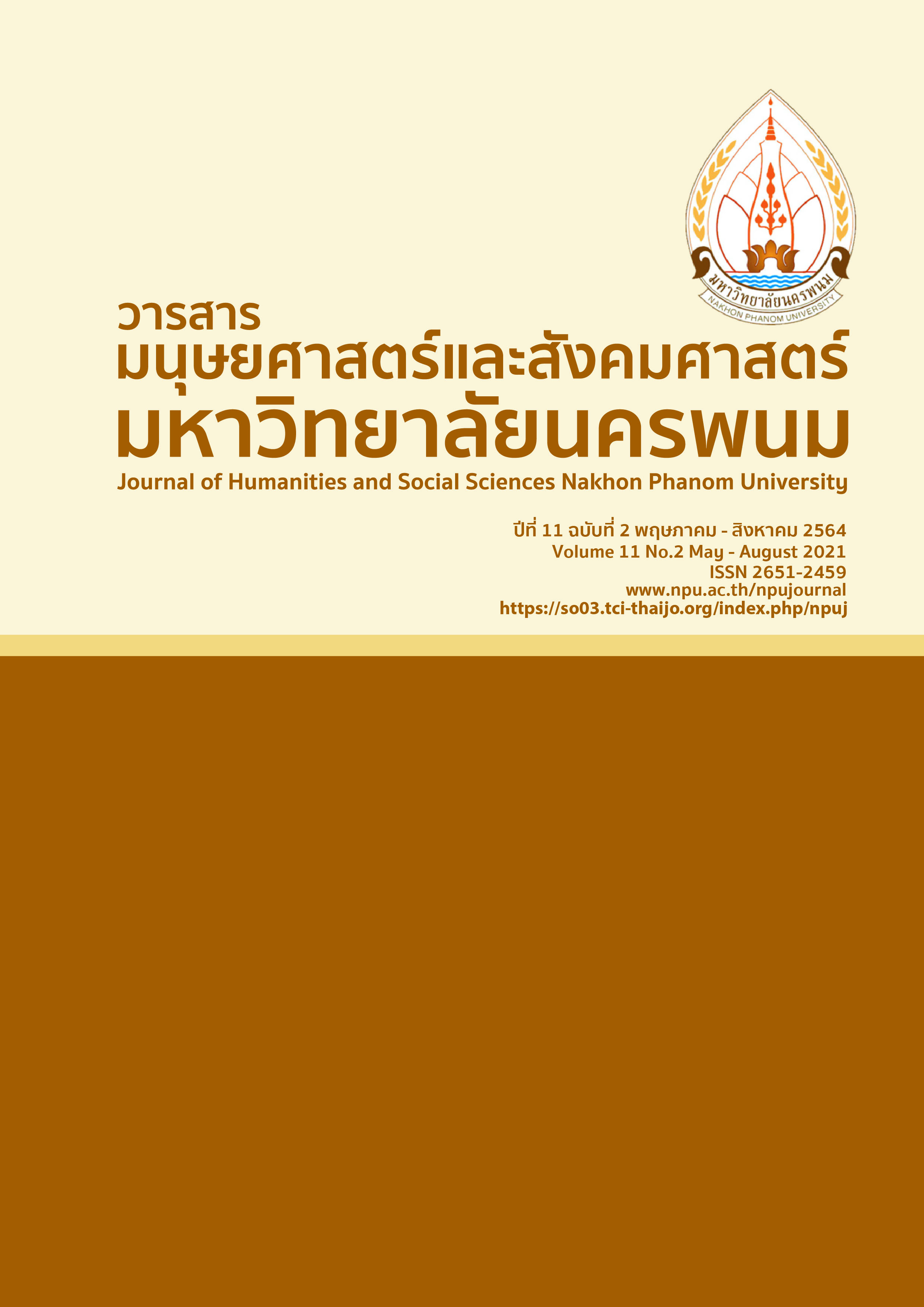The Management Model Development for Executive towards High Performance Organization in Banking and Financial Institutes
Main Article Content
Abstract
This research aimed to investigate management components, develop the management model for executive towards high performance organization in banking and financial institutes, and create a management’s guidelines for executive development towards high performance organization in banking and financial institutes. This research applied mixed methods including qualitative and quantitative. The tools for the qualitative method were an in-depth interview and a focus group, and their data were analyzed by using content analysis. Then the qualitative method’s results were used to create a questionnaire. The samples were included 10 banking and financial institute’ executives participating to the in-depth interviews, 15 executives and scholars related to banking and financial institute joining the focus group, 5 experts for evaluating the manual, and 325 Thai commercial bank’s department managers or equivalent positions for a questionnaires. The data from the questionnaire were analyzed by using descriptive statistics frequency, means, standard deviation, and exploratory factor analysis.The research results showed that 1) the management model for executive towards high performance organization in banking and financial institutes were composed of five essential components: self-leading, team leading, business leading, technology leading, and organizational leading; 2) such five components each of them were significantly related and that were suitably used for executive development model towards high performance organization in banking and financial institutes, and 3) compiling a manual using as guidelines for executive development towards high performance organization in banking and financial institutes focused on continuing self-development. In conclusion, all experts agreed that the model and its manual’s appropriateness were highly qualified. Therefore, the model and the manual can be applied as guidelines for developing banking and financial executives
Article Details
References
ABeam Consulting. (2020). Key Success Factors of Digital Transformation in Thailand. Retrieved April 2020, from https://www.abeam.com/th/sites/default/files/field/field_pdf_files/WP005_Key_Success_Factors _of_DX.pdf
Best, J. (2018). Breaking digital gridlock : improving your bank’s digital future by making technology changes now. USA : John Wiley & Son.
Bagorogoza, J.K., et al. (2013). A critical assessment of the HPO framework in the Uganda finance sector.” Botswana journal of Business. 6(1),1-16.
Boston Consulting Group. (2018). The key roles of leadership : Forbes Global CEO Conference 2018. Retrieved May 2019, from https://www.techsauce.co/tech -and-biz/leadership-skills-needed-for-ceos-from-forbes-global-ceo-conference-2018
Covey, S.R. (2003). The 4 roles of Leadership. Singapore : Franklin Covey.
De Waal, A.A. (2015). What makes a high performance organization: five validated factors of competitive advantage that apply worldwide. Netherlands : Sitestrom.
Deloitte. (2017). Bank of the future. Retrieved February 2019, from : https://www2.deloitte.com/content/ dam/Deloitte/be/Documents/Bank-of-the-Future_Final.pdf
Ducker, P.F. (2006). The effective executive : The definitive guide to getting the right things done. New York : Harper.
EY. (2019). Are you shaping your bank’s digital future or is it shaping you?. Retrieved October 2019, from https://www.ey.com/engl/banking-capital-markets/shaping-digital-future-banks
Fongprae, P. (2017). Patčhai thī mī phon tō̜ kānphatthanā ʻongkō̜n hai mī sakkayaphāp kānthamngān sūng : kō̜ranī sưksā thanākhān yūʻōbī [Factors Affecting the Development of Organizations to Become High Performance Organizations case study: United Overseas Bank (Thai) Public Company Limited (Unpublished master’s thesis)]. Burapha University, Chonburi, Thailand.
Hayward, S. (2018). The agile leader: How to create an agile business in the digital age. London : Kogan.
Holbeche, L. (2011). The high performance organization : creating dynamic stability and sustainable success. New York : Routledge, 2011.
Honghiranrueng, T. (2018). Kānphatthanā rūpbǣp sakkayaphāp phūbō̜rihān radap phūčhatkān thanākhān phānit Thai nai yuk sētthakit dičhithan [Competency Development Model for Thai Commercial Bank’ Managers in Digital Economy]. King Mongkut’s University of Technology North Bangkok, Bangkok, Thailand.
HPO Center (2019). The High performance organization (HPO) framework. Retrieved February 2019, from https://www.hpocenter.com/hpo-framework/
Institute for Corporate Productivity. (2010). The five domain of High performance organization. Retrieved October 2019, from : URL : https://www.i4cp.com/productivity-blog/2010/01/21/new-i4cp-study-the-five-domains-of-high-performance-organizations
Goleman, D. (2011). Leadership: The power of emotional intelligence. New York : More Than Sound.
Gulick, L and Urwick, L. (2003). Papers on the science of administration. New York : Routledge.
King, B. (2018). Bank 4.0: bank everywhere, never at a. bank. Cornwall : Marshall Cavendish Business.
Marous, J. Digital Future of Banking Requires Leadership Model. Retrieved August 2019, from https: //thefinancialbrand.com/81901/future-digital-banking-leadership-model
Mbama, C.L. (2018). Digital Banking Services, Customer Experience and Financial Performance in UK Banks.
(Thesis of Doctor of Philosophy). United Kingdom : Sheffield Hallam University.
Pulputtapong, N., Dokyam, P., and Wantanakomol, S. (2016). kānsưksā phrưttikam kānsư̄sān phāinai ʻongkō̜n thurakit ʻutsāhakam [The Study of Internal Communication Behavior in Industrial Organizations]. Journal of Humanities and Social Sciences, Rajapruk University. 2(1),24-35.
Pongsiri, N. (2017). Phū nam yuk Digital Economy [Leader in digital economy era]. HR Society Magazine. 15, (172),20-23.
Rovinelli, R. J., and Hambleton, R. K. (1977). On the use of content specialists in the assessment of criterion-referenced test item validity. Dutch Journal of Educational Research. 2,49-60.
Schermerhorn, J.R., Hunt, J.G. and Osbourn, R.N. (2010) Core concepts of organizational behavior. Hoboken, NJ : John Wiley & Sons.
Sukanek, A. (2018). Konlayut kānbō̜rihān čhatkān khō̜ng thanākhān phānit ʻēkkachon sū kān pen ʻongkān samatthana sūng [Strategic Management of commercial bank to be high performance organization (Unpublised Doctoral Dissertation)]. Silpakorn University, Bangkok, Thailand.
The Economist. (2019).Tech’s raid on the banks. Retrieved October 2019, from https://www. economist.com/leaders/2019/05/02/techs-raid-on-the-banks
Wichitmaethavanich, S (2020). Kānphatthanā khō̜ng thurakit thanākhān nai lōk dičhithan [Development of Banking Business in Digital World]. Retrieved April 2020, from https://www.bot.or.th/Thai/Research AndPublications/articles/Pages/Article_
Witts, J.O. (2016). The Role of Strategic Leadership in Banking Profitability. (Doctor of Business Administration Thesis, College of Management and Technology). Minnesota, USA. : Walden University.
Yamane, T. (1973). Statistics: an introductory analysis (3rd edition). New York : Harper & Row


